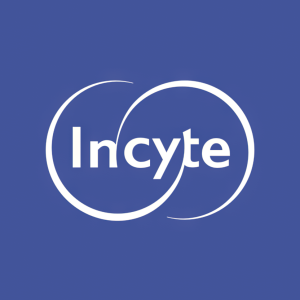Incyte Announces FDA Approval of Pemazyre® (pemigatinib) as the First and Only Targeted Treatment for Myeloid/Lymphoid Neoplasms (MLNs) with FGFR1 Rearrangement
– This marks the second indication for Pemazyre, which received accelerated FDA approval in 2020 for adults with previously treated, unresectable locally advanced or metastatic cholangiocarcinoma with a fibroblast growth factor receptor 2 (FGFR2) fusion or other rearrangement
– Pemazyre is the only FGFR inhibitor with multiple indications
“The approval of Pemazyre represents an important treatment advancement for people living with MLNs with FGFR1 rearrangement
A patient with an MLN with FGFR1 rearrangement may present with bone marrow involvement with a chronic myeloid malignancy (such as myeloproliferative neoplasm [MPN], myelodysplastic syndrome/MPN) or a blast phase malignancy (such as B- or T-cell acute lymphoblastic leukemia/lymphoma, acute myeloid leukemia or mixed phenotype acute leukemia). Bone marrow involvement may or may not be accompanied by extramedullary disease (EMD); some patients may present with EMD only. MLNs with FGFR1 rearrangement are caused by chromosomal translocations involving the FGFR1 gene, with various partner genes resulting in constitutive activation of the FGFR1 receptor tyrosine kinase, impacting cell differentiation, proliferation and survival2. Patients often relapse because existing first-line therapies sometimes fail to induce durable clinical and cytogenetic responses.
The FDA approval was based on data from the Phase 2 FIGHT-203 study, a multicenter open-label, single-arm trial that evaluated the safety and efficacy of Pemazyre in 28 patients with relapsed or refractory MLNs with FGFR1 rearrangement. Patients could have relapsed after allogeneic hematopoietic stem cell transplantation (allo-HSCT) or after a disease modifying therapy or were not a candidate for allo-HSCT or other disease modifying therapies.
- Study participants included patients with documented MLNs with an 8p11 translocation on conventional cytogenetics and/or an FGFR1 rearrangement on break-apart FISH testing. (An FDA-approved test for detection of FGFR1 rearrangement in patients with relapsed or refractory MLNs is not available.)
-
In patients with chronic phase in the marrow with or without EMD (N = 18), the complete response (CR) rate was
78% (14/18;95% CI 52, 94). The median time to response of CR was 104 days (range, 44 to 435 days). The median duration of CR was not reached (range, 1+ to 988+ days). - In patients with blast phase in the marrow with or without EMD (N = 4), two patients achieved a CR (duration: 1+ and 94 days).
- In patients with EMD only (N = 3), one patient achieved a CR (duration: 64+ days).
-
For all patients (N = 28 including three patients without evidence of morphologic disease) the complete cytogenetic response rate was
79% (22/28;95% CI: 59, 92).
The most common (≥
“In patients with relapsed or refractory MLNs with FGFR1 rearrangement treated with Pemazyre in FIGHT-203, the high rate of complete response and complete cytogenetic response in patients with chronic phase disease and the high rate of complete cytogenetic response in patients with blast phase disease is clinically meaningful, especially in light of the lack of these specific responses with existing first-line treatments,” said Dr. Srdan Verstovsek, M.D., Ph.D., Professor,
The supplemental New Drug Application (sNDA) for Pemazyre for the treatment of adults with relapsed or refractory MLNs with FGFR1 rearrangement was reviewed by the FDA under Priority Review. The FDA grants Priority Review to medicines that may offer a major advance in treatment where none currently exists. The designation shortens the review period to six months compared to 10 months for Standard Review.
About FIGHT-203
FIGHT-203 is a Phase 2, multicenter trial that enrolled patients 18 years and older with myeloid/lymphoid neoplasms (MLNs) with a fibroblast growth factor receptor 1 (FGFR1) rearrangement. Sponsored by
About Pemazyre® (pemigatinib)
Pemazyre, a fibroblast growth factor receptor (FGFR) inhibitor, is the first targeted treatment approved for use in
Pemazyre is also indicated for the treatment of adults with relapsed or refractory previously treated, unresectable locally advanced or metastatic cholangiocarcinoma with a FGFR2 fusion or other rearrangement as detected by an FDA-approved test. This indication is approved under accelerated approval based on overall response rate and duration of response (DOR). Continued approval may be contingent on verification and description of clinical benefit in a confirmatory trial(s).
IMPORTANT SAFETY INFORMATION
Ocular Toxicity
Retinal Pigment Epithelial Detachment (RPED): PEMAZYRE can cause RPED, which may cause symptoms such as blurred vision, visual floaters, or photopsia. Clinical trials of PEMAZYRE did not conduct routine monitoring including optical coherence tomography (OCT) to detect asymptomatic RPED; therefore, the incidence of asymptomatic RPED with PEMAZYRE is unknown.
Among 635 patients
Perform a comprehensive ophthalmological examination including OCT prior to initiation of PEMAZYRE and every 2 months for the first 6 months and every 3 months thereafter during treatment. For onset of visual symptoms, refer patients for ophthalmologic evaluation urgently, with follow-up every 3 weeks until resolution or discontinuation of PEMAZYRE. Modify the dose or permanently discontinue PEMAZYRE as recommended in the prescribing information for PEMAZYRE.
Dry Eye: Among 635 patients
Hyperphosphatemia and Soft Tissue Mineralization
PEMAZYRE can cause hyperphosphatemia leading to soft tissue mineralization, cutaneous calcification, calcinosis, and non-uremic calciphylaxis. Increases in phosphate levels are a pharmacodynamic effect of PEMAZYRE. Among 635 patients
Monitor for hyperphosphatemia and initiate a low phosphate diet when serum phosphate level is >5.5 mg/dL. For serum phosphate levels >7 mg/dL, initiate phosphate lowering therapy and withhold, reduce the dose, or permanently discontinue PEMAZYRE based on duration and severity of hyperphosphatemia as recommended in the prescribing information.
Embryo-Fetal Toxicity
Based on findings in an animal study and its mechanism of action, PEMAZYRE can cause fetal harm when administered to a pregnant woman. Oral administration of pemigatinib to pregnant rats during the period of organogenesis caused fetal malformations, fetal growth retardation, and embryo-fetal death at maternal exposures lower than the human exposure based on area under the curve (AUC) at the clinical dose of 13.5 mg.
Advise pregnant women of the potential risk to the fetus. Advise female patients of reproductive potential to use effective contraception during treatment with PEMAZYRE and for 1 week after the last dose. Advise males with female partners of reproductive potential to use effective contraception during treatment with PEMAZYRE and for 1 week after the last dose.
Adverse Reactions: Cholangiocarcinoma
Serious adverse reactions occurred in
Permanent discontinuation due to an adverse reaction occurred in
Dosage interruptions due to an adverse reaction occurred in
Dose reductions due to an adverse reaction occurred in
Clinically relevant adverse reactions occurring in ≤
Within the first 21-day cycle of PEMAZYRE dosing, serum creatinine increased (mean increase of 0.2 mg/dL) and reached steady state by Day 8, and then decreased during the 7 days off therapy. Consider alternative markers of renal function if persistent elevations in serum creatinine are observed.
In cholangiocarcinoma (n=146) the most common adverse reactions (incidence ≥
Adverse Reactions: Myeloid/Lymphoid Neoplasms with FGFR1 Rearrangement
Serious adverse reactions occurred in
Permanent discontinuation due to an adverse reaction occurred in
Dose reductions of PEMAZYRE due to an adverse reaction occurred in
The most common (≥
Drug Interactions
Avoid concomitant use of strong and moderate CYP3A inhibitors with PEMAZYRE. Reduce the dose of PEMAZYRE if concomitant use with a strong or moderate CYP3A inhibitor cannot be avoided. Avoid concomitant use of strong and moderate CYP3A inducers with PEMAZYRE.
Special Populations
Advise lactating women not to breastfeed during treatment with PEMAZYRE and for 1 week after the last dose.
Reduce the recommended dose of PEMAZYRE for patients with severe renal impairment as described in the prescribing information.
Reduce the recommended dose of PEMAZYRE for patients with severe hepatic impairment as described in the prescribing information.
Please see Full Prescribing Information for PEMAZYRE.
You are encouraged to report negative side effects of prescription drugs to the FDA. Visit www.fda.gov/medwatch, or call 1-800-FDA-1088.
You may also report side effects to Incyte Medical Information at 1-855-463-3463.
About
Forward-Looking Statements
Except for the historical information set forth herein, the matters set forth in this press release, including statements regarding whether or when Pemazyre might provide a successful treatment option for patients with MLN with FGFR1 rearrangement, the Company’s ongoing clinical development program for pemigatinib, the FIGHT-203 clinical trial program, the LIMBER program and Incyte’s research in and approach to rare blood cancers and their treatment, contain predictions, estimates and other forward-looking statements.
These forward-looking statements are based on the Company’s current expectations and subject to risks and uncertainties that may cause actual results to differ materially, including unanticipated developments in and risks related to: unanticipated delays; further research and development and the results of clinical trials possibly being unsuccessful or insufficient to meet applicable regulatory standards or warrant continued development; the ability to enroll sufficient numbers of subjects in clinical trials and the ability to enroll subjects in accordance with planned schedules; the effects of the COVID-19 pandemic and measures to address the pandemic on the Company’s clinical trials supply chain and other third-party providers and development and discovery operations; determinations made by the FDA or other regulatory authorities; the Company’s dependence on its relationships with its collaboration partners; the efficacy or safety of the Company’s products and the products of the Company’s collaboration partners; the acceptance of the Company’s products and the products of the Company’s collaboration partners in the marketplace; market competition; sales, marketing, manufacturing and distribution requirements; and other risks detailed from time to time in the Company’s reports filed with the
1
2Reiter A, Gotlib J. Myeloid neoplasms with eosinophilia. Blood. 2017;129(6):704–714.
View source version on businesswire.com: https://www.businesswire.com/news/home/20220826005244/en/
Media
302-498-7036
jantonacci@incyte.com
Investors
302-274-4773
cchiou@incyte.com
Source:







